Entertaining and INformative
Like the many other books that now proceed in the Vickers Guide library, Vickers Guide: SIG Sauer Vol. 1 succeeds in being both a feast for the eyes and the mind. Leonardo Antaris and James Rupley’s sumptuous photography draws you in, and then you are hit with a wealth of facts and information from the cast of contributors. Leonardo M. Antaris, MD, Ian McCollum, James Rupley and Larry Vickers do the majority of the text, but there are also cool contributions from Jack Carr, George Harris and others.
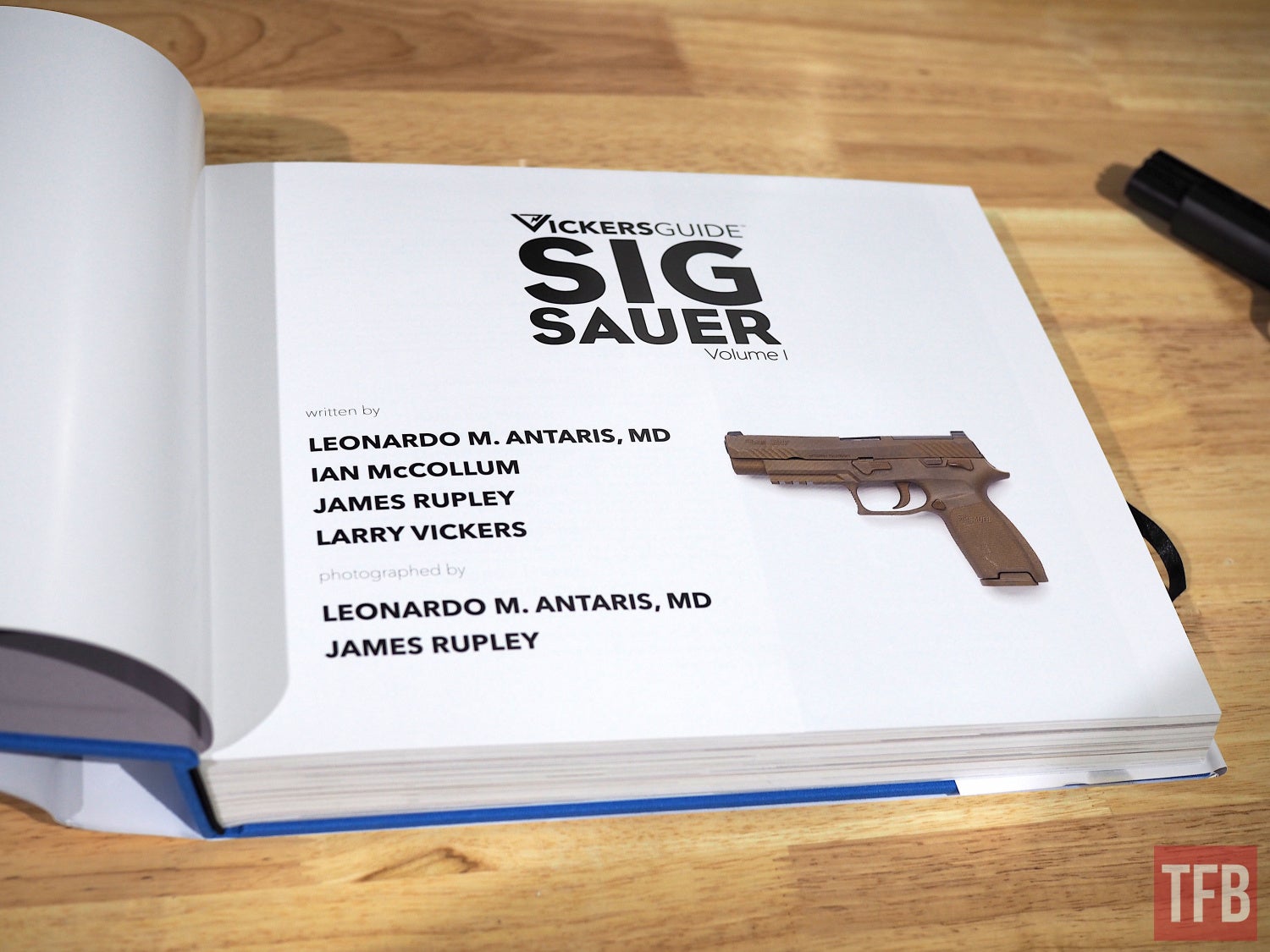
Like all other Vickers Guides, SIG Vol. 1 has an excellent cast of contributors
Vickers Guide takes the reader on a journey from the early days of the Swiss Wagon Factory converting muskets to rifles on the side, all the way to the modern-day manufacturing and 3D prototyping wizardry of SIG Sauer New Hampshire. Vol. 1’s main focus being pistols and submachine guns, the tome appropriately first features the license-built M1894 Mannlicher pistols.
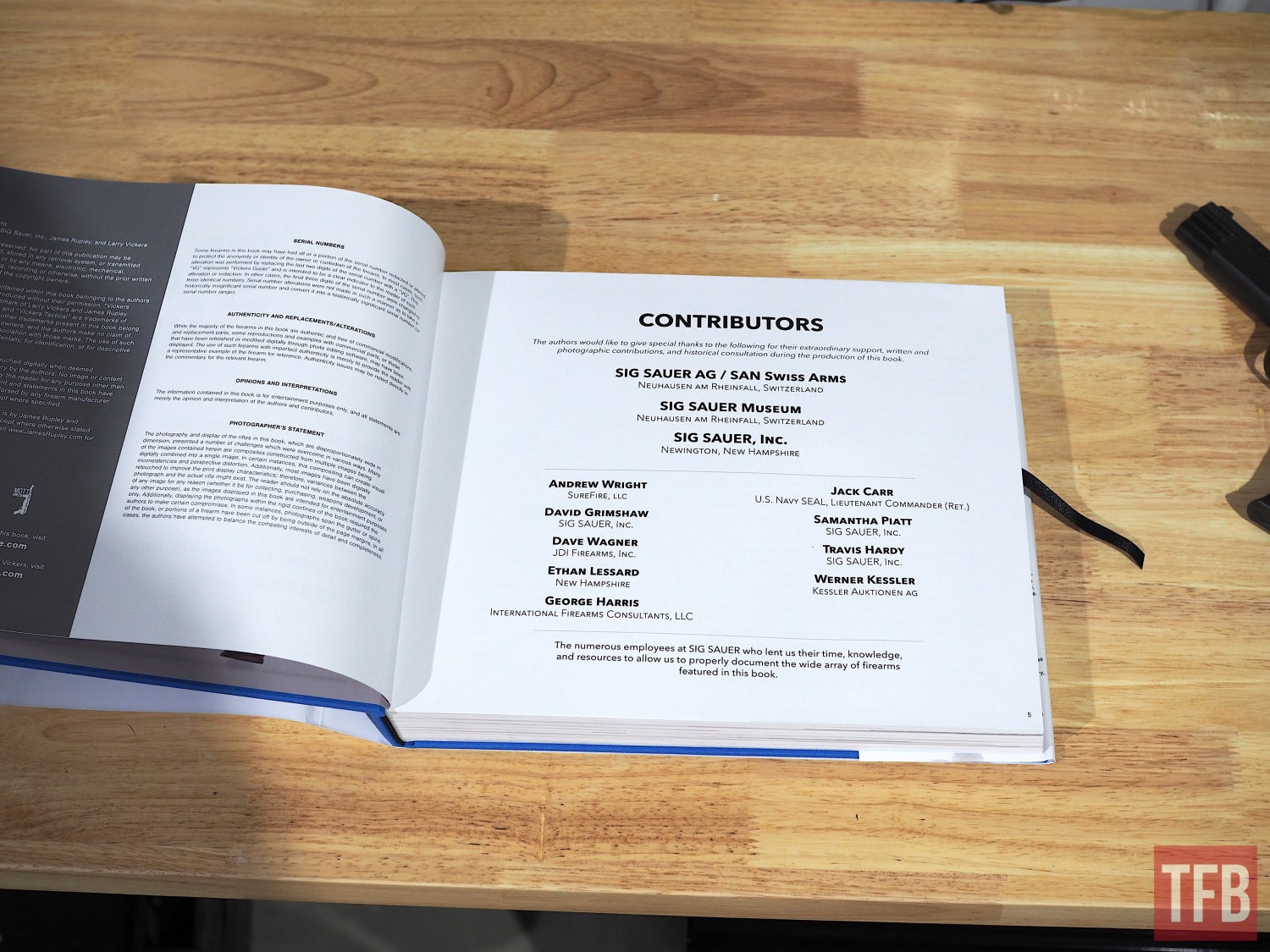
Like all other Vickers Guides, SIG Vol. 1 has an excellent cast of contributors
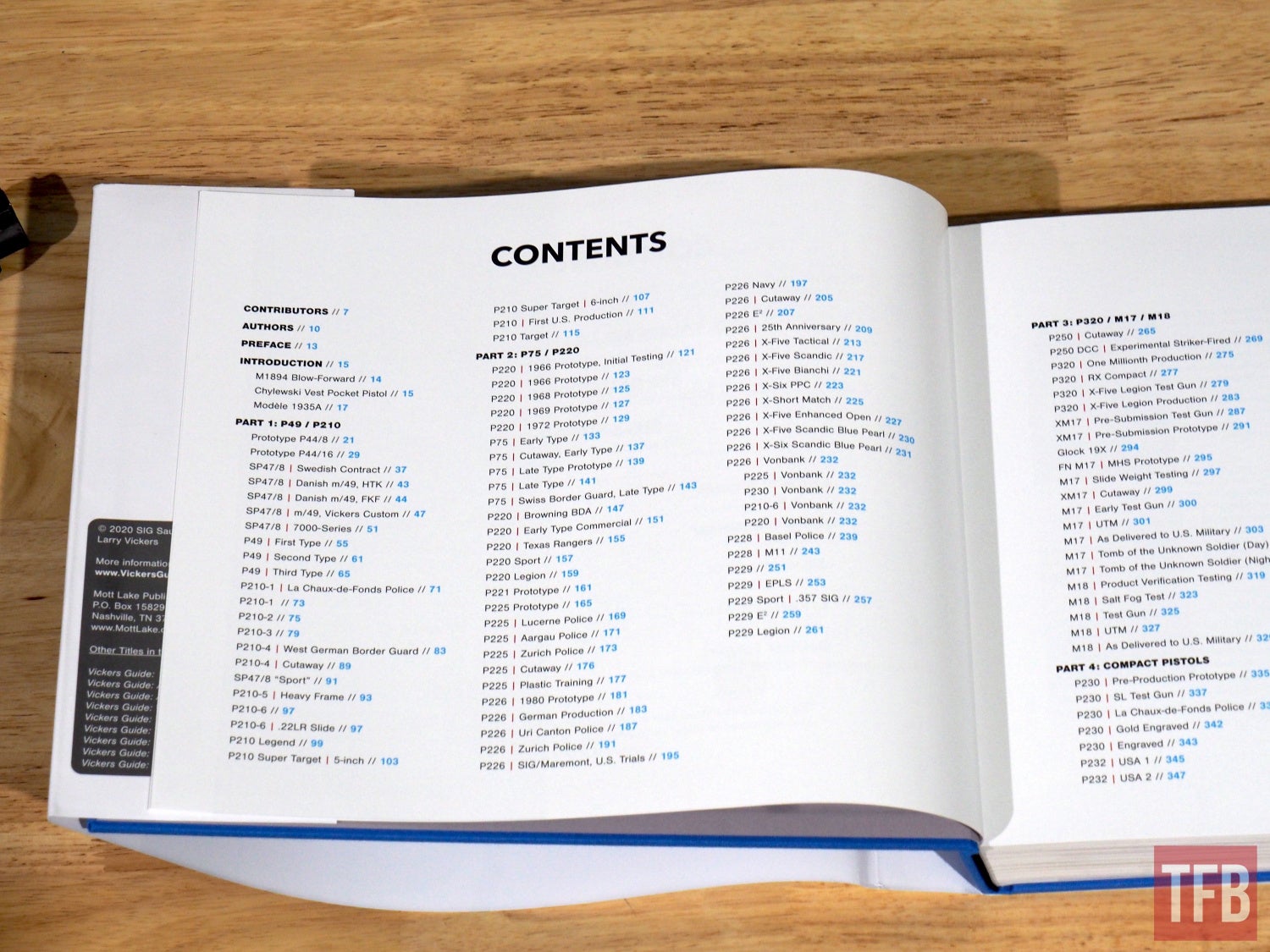
Table of contents
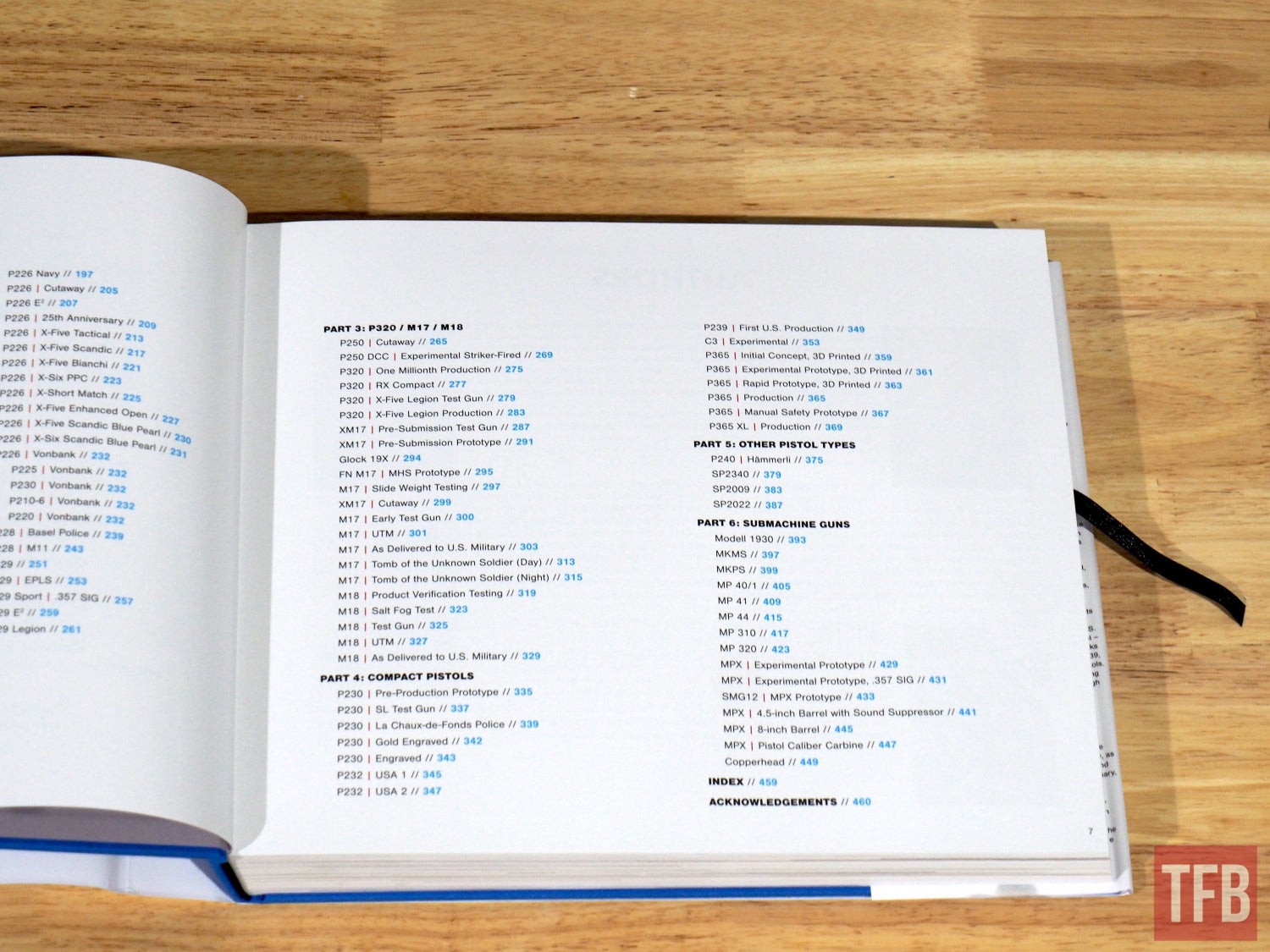
Table of contents
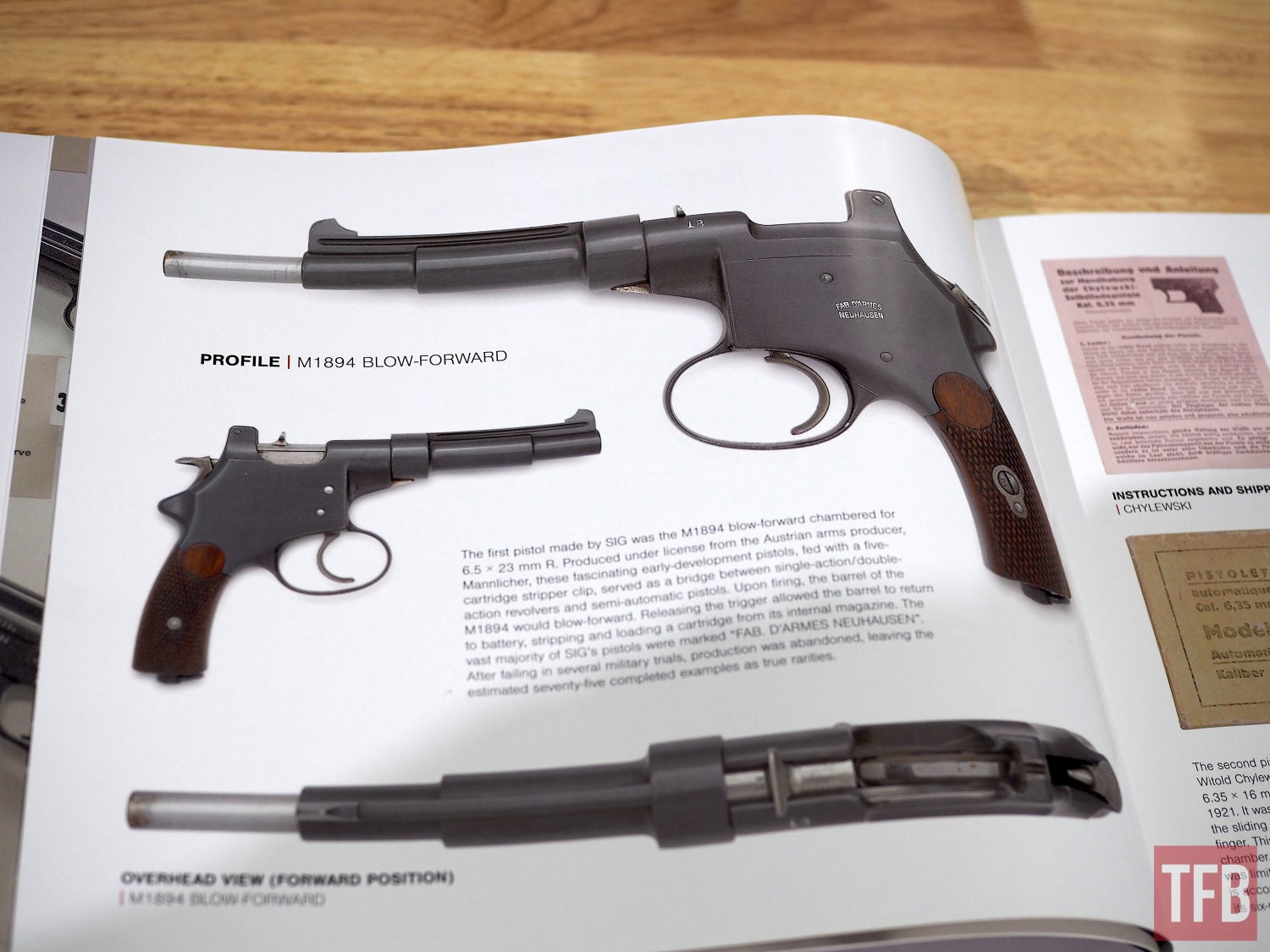
SIG’s first production semiautomatic, the license-built M1894
Take the 210
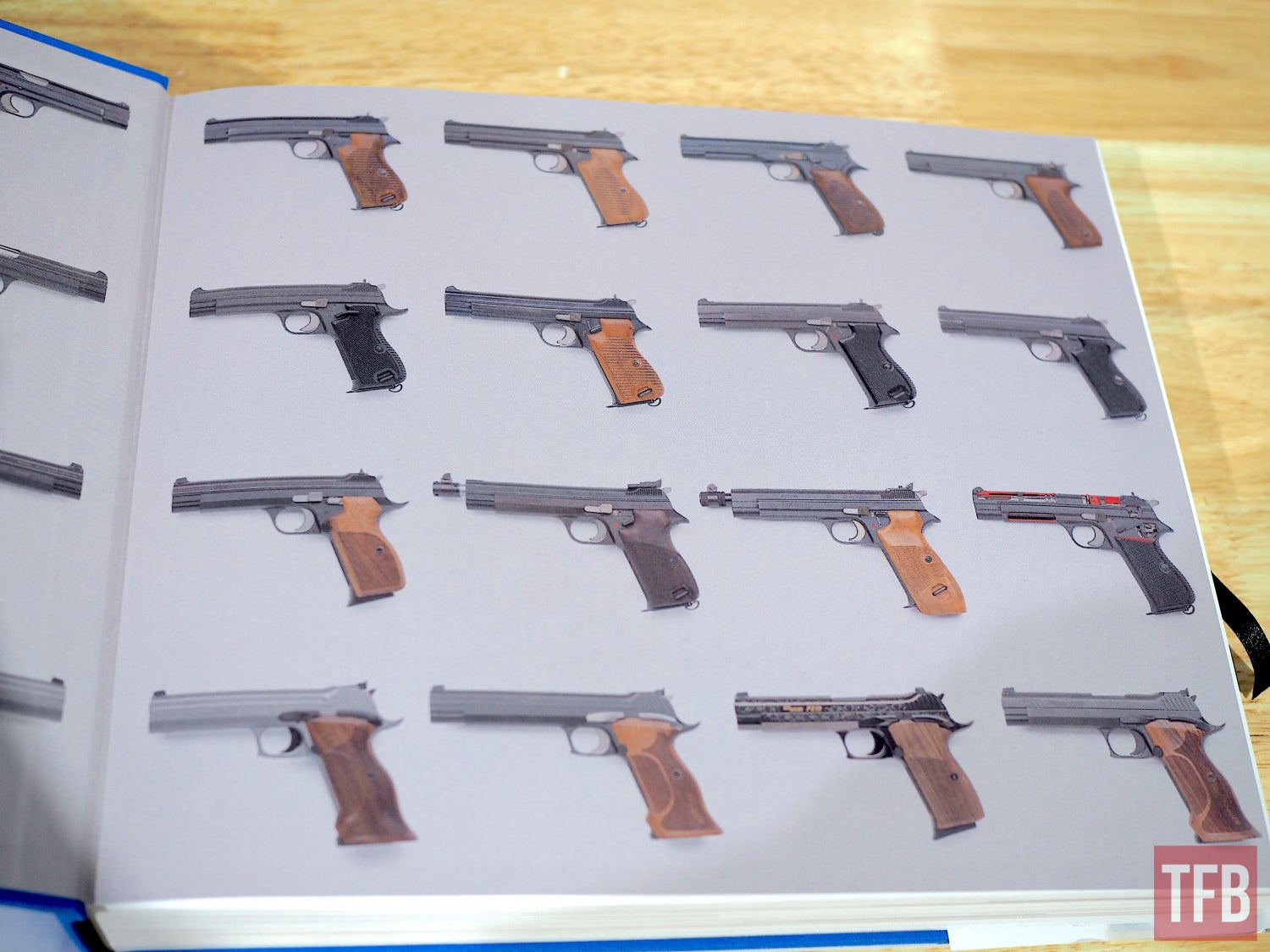
The P210 is appropriately heavily featured
The next main subject is the P210, with 94 pages taking the reader from Charles Petter’s Modèle 1935A all the way through the American redesign of the P210 with a barrel hood lock-up. One new, super interesting fact that I learned from reading this book was that the SIG P240 Hämmerli designed in the 1970s for Olympic pistol shooting also used a mechanically locked barrel with a rectangular locking block instead of interlocking ribs and grooves. Seems that the Swiss also thought that was one of the best ways to optimize accuracy out of the P210 50 years ago!

The P210 is appropriately heavily featured. This book is huge, P210 for scale.
There is also a wealth of information on almost every other SIG pistol, from the P75/220, P221 and P225 prototypes, P226’s of all styles, 228’s, 229’s, 230’s, 232’s and so on. An excellent section on the P320 and MHS program brings us into the most recent era of SIG, with the 365 featured heavily as well. The only pistols that were curiously absent were the P238, 938, and any SIG 1911. I can only assume that the SIG AR15 type pistols will fit better into Vol. 2, which will feature SIG’s rifles and machine guns. Another subject that would fit well in this book would be a bit more detail about the development of the .357 SIG cartridge, but again, this is a minor quibble.
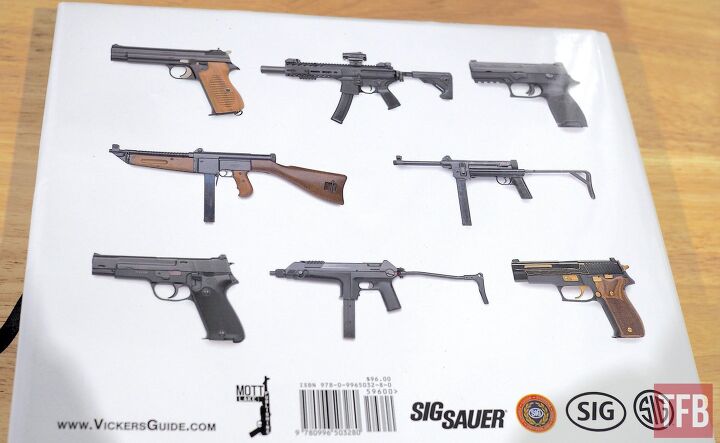
Rear cover. Note the interesting SMGs
Sig Subs
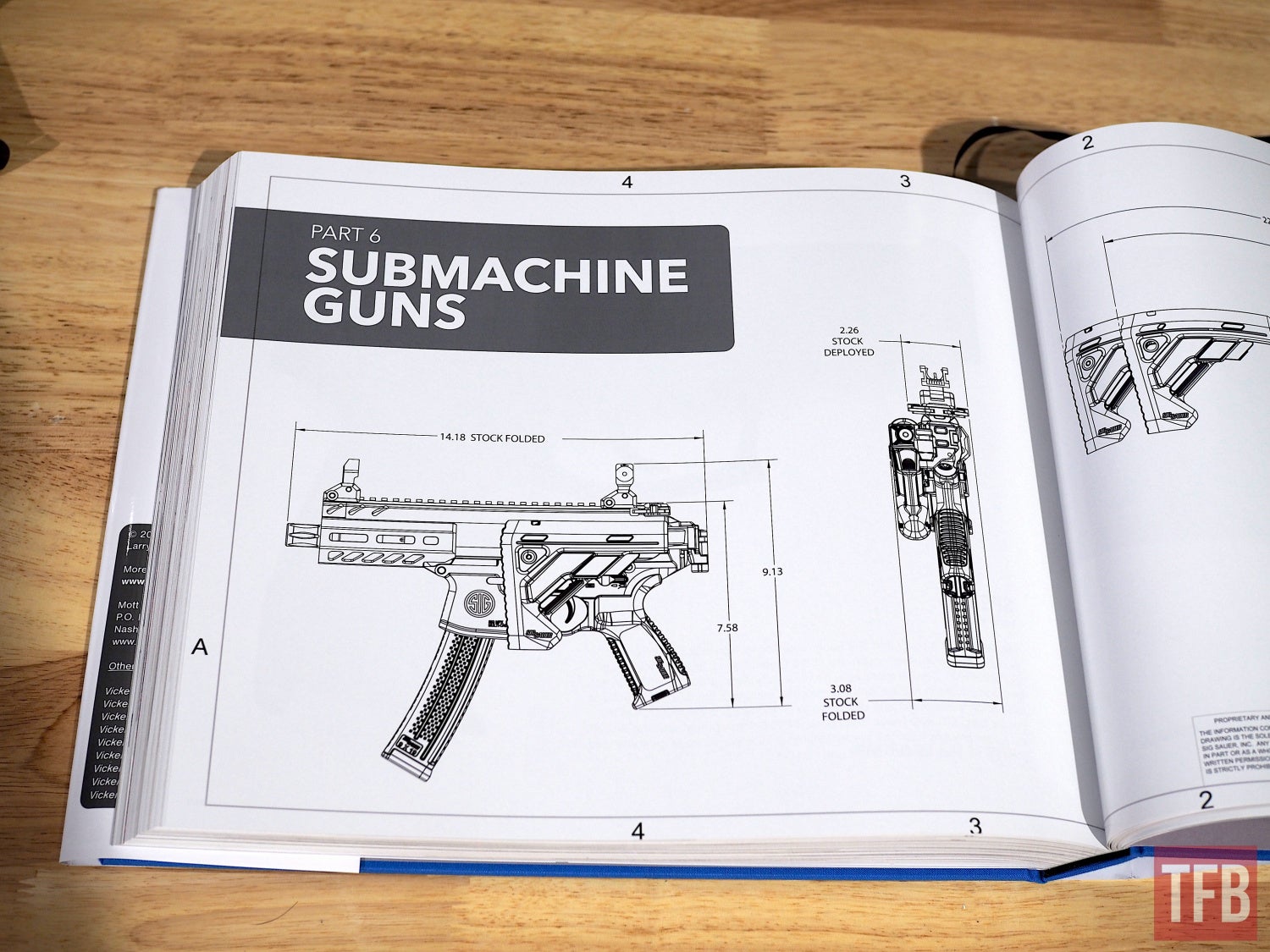
The section on SIG’s submachine guns was utterly fascinating
Of paramount interest to me as a reader were the early submachine guns of SIG Sauer. While I am familiar with the MPX, and was aware of the MKMS by its Finnish service, I must admit that the Modell 1930, SIG’s other early submachine guns, and the 1970’s spy-tastic MP320 were all fun new firearms for me to learn about. Of particular interest was Gotthard End’s innovation of a folding magazine well as both an ease-of carry and safety measure.
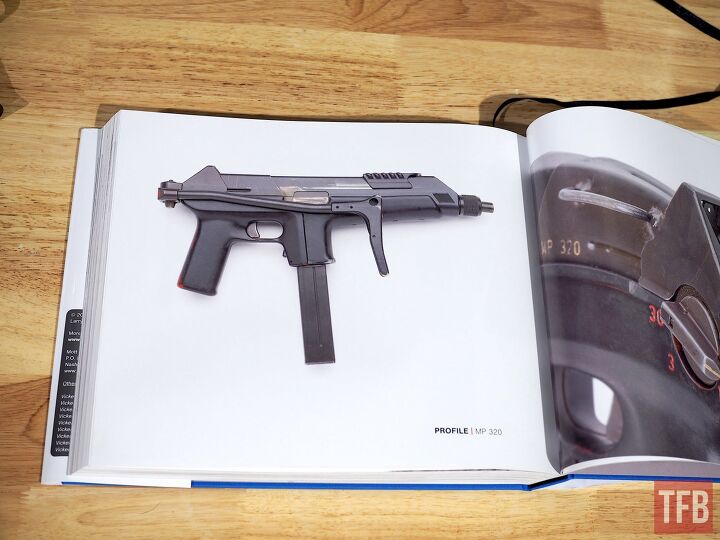
One of SIG’s awesome early SMG’s, the 320
Fantastic Photos
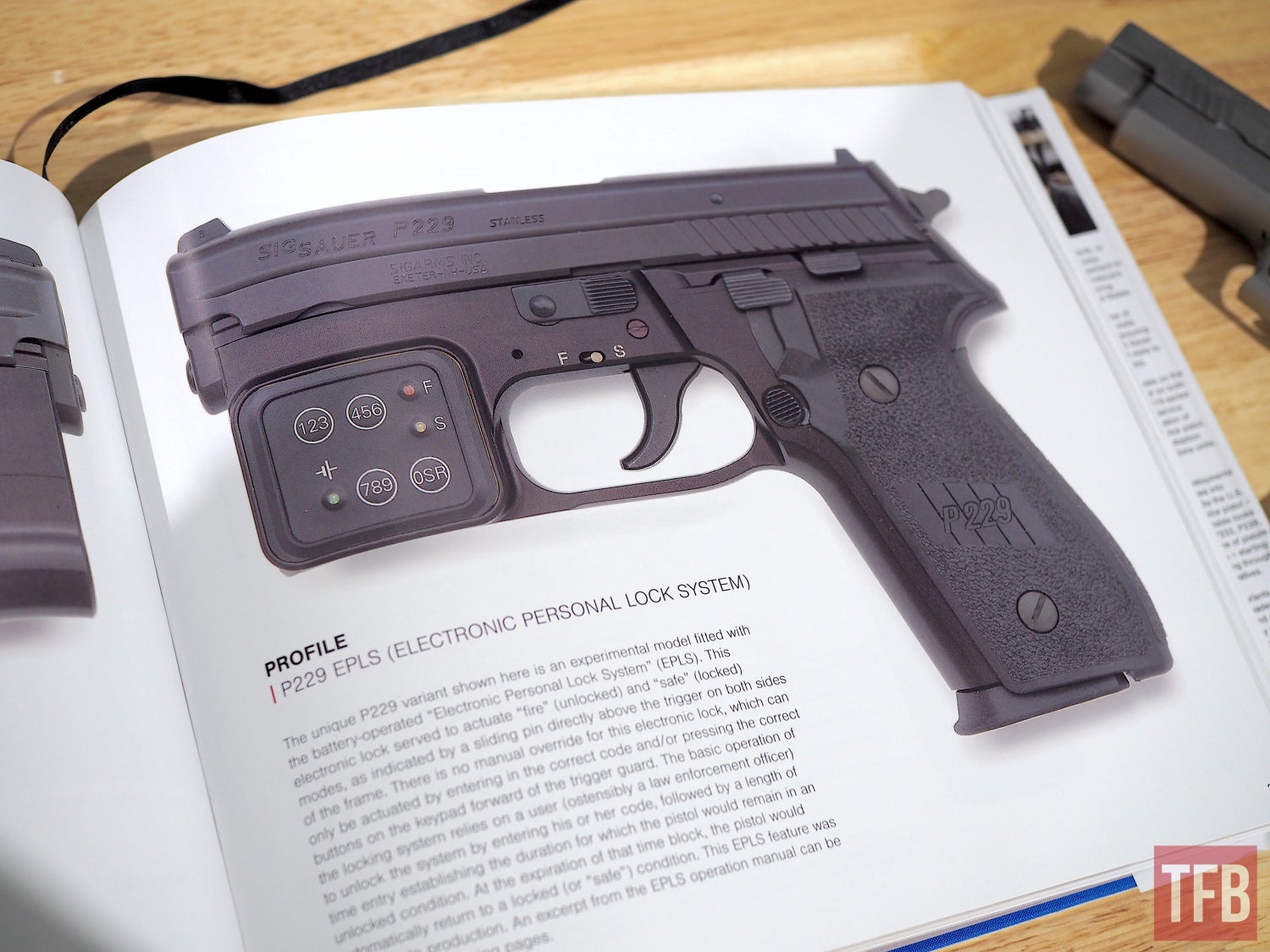
The book covers many rare and interesting prototypes
Vickers Guides are among the best “coffee table” gun books currently in print. The excellent photography plays a large part in that. The half and full-page photos are absolutely excellent from a gun guy’s point of view. Like some other Vickers Guide standard edition books, my edition of Vol. 1 came with a nice glossy dust jacket, but also has a great looking and feeling blue, foil embossed hardcover underneath, should one ever lose or damage the dust cover.
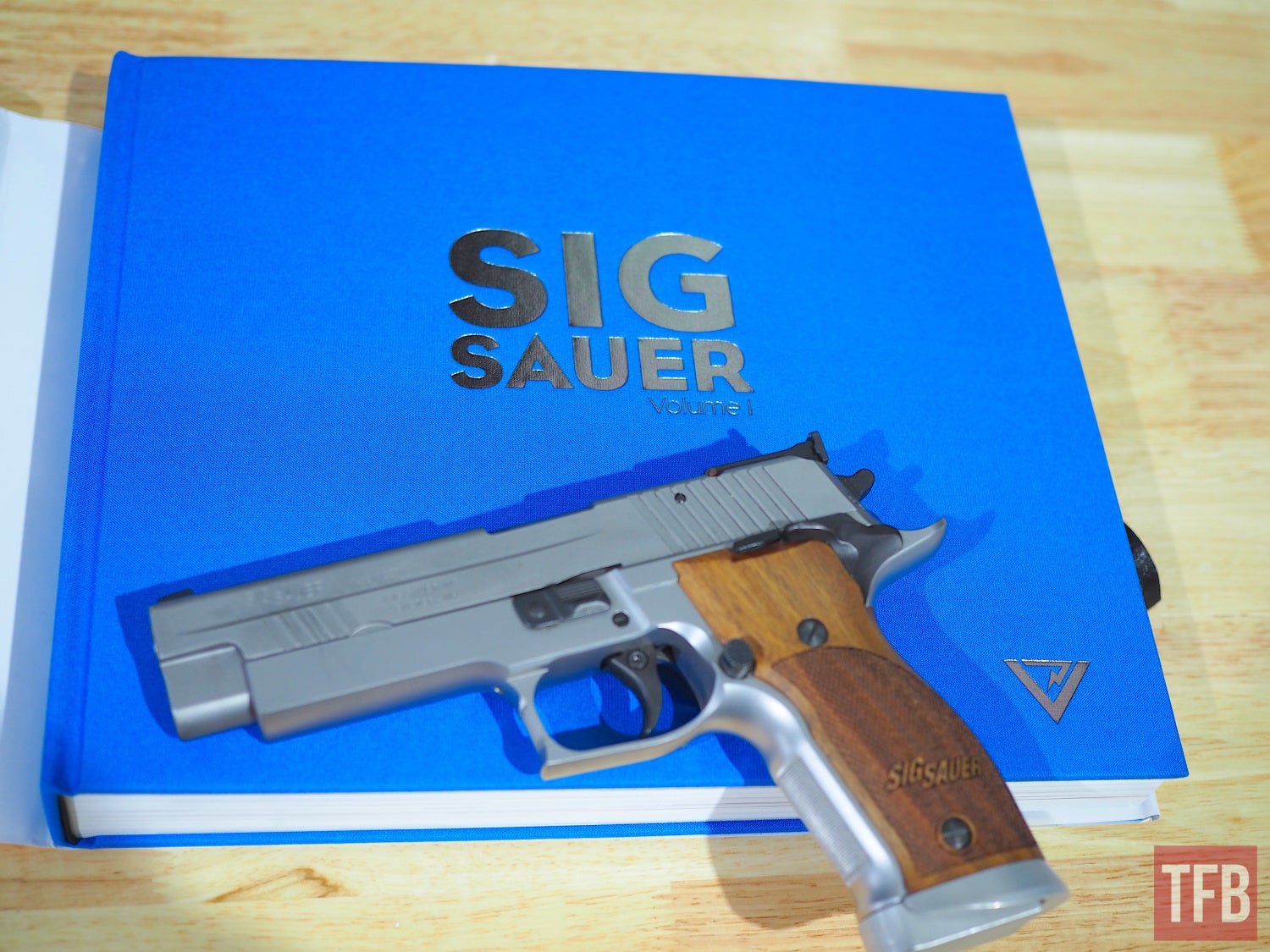
Should one lose or tear the dust jacket, the blue hardcover is excellent as well
Like most other Vickers Guide books, it’s a hefty tome as well. Vol 1’s 460 pages of high-quality glossy paper help it tip the scales at exactly 8lbs. It’s hard not to read through it in one sitting, but if you have to pause your perusal, the book comes equipped with a nice black ribbon style bookmark.
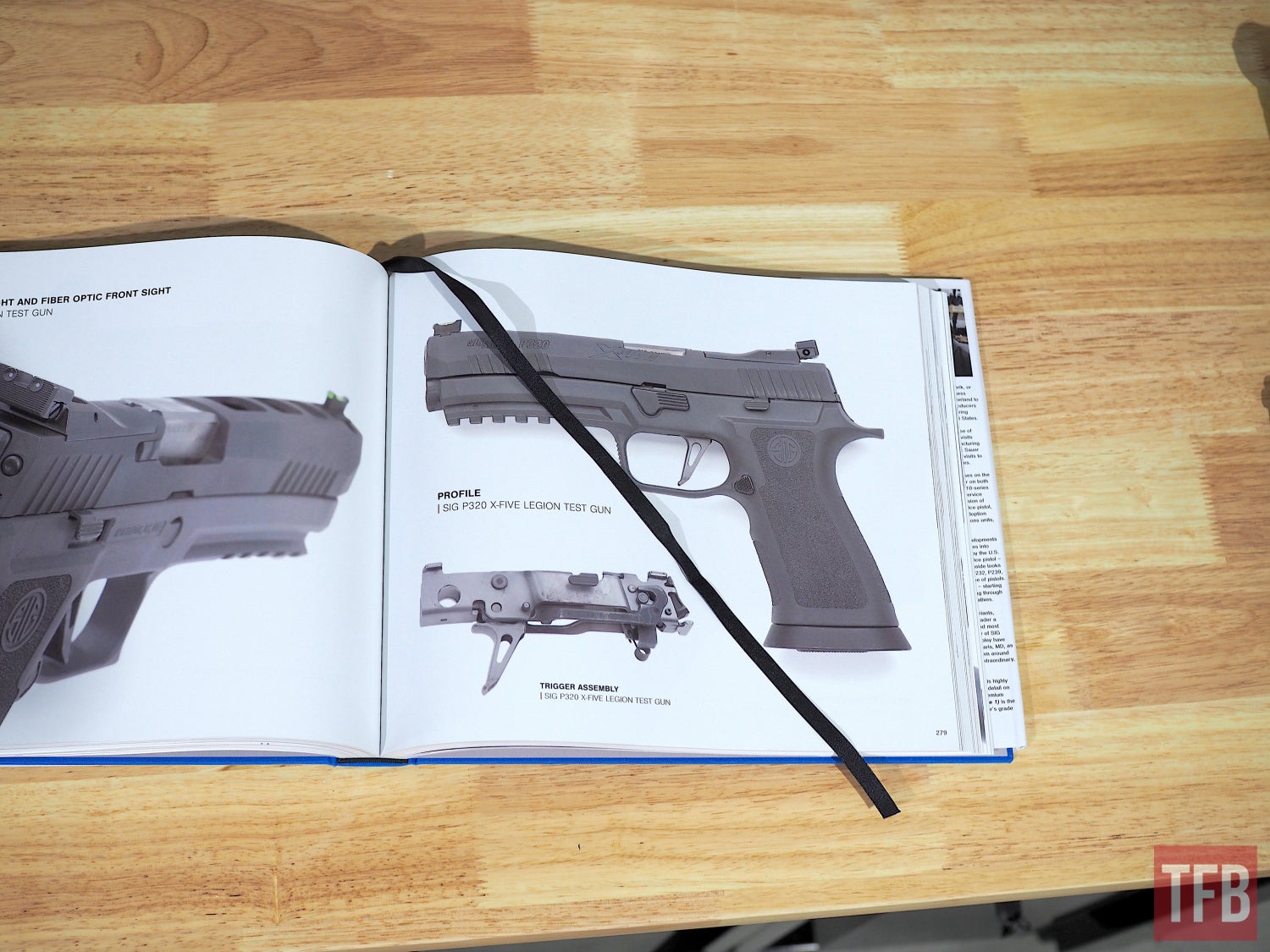
Note the nice included bookmark ribbon
Overall Impression
I have a few SIG pistols, 6 total including a P210, a P226 X-five I used to compete with, and a P365XL that is one of my current carry pieces. This book gave me a better appreciation for both the particular models I own and the overall worldwide SIG production and design story. The section on the M17 and the MHS program was exceptionally well written as well. If you want to learn more about SIG Sauer whether it be the Swiss, German, or US incarnations, or if you just have the space for a gorgeous gun-related coffee book, Vickers Guide: SIG Sauer Volume 1 would be a great addition to your library. But you don’t have to take my word for it.

Rear cover. Note the interesting SMGs
A big thank you to SIG Sauer and Vickers Guide for the opportunity!
 Your Privacy Choices
Your Privacy Choices
